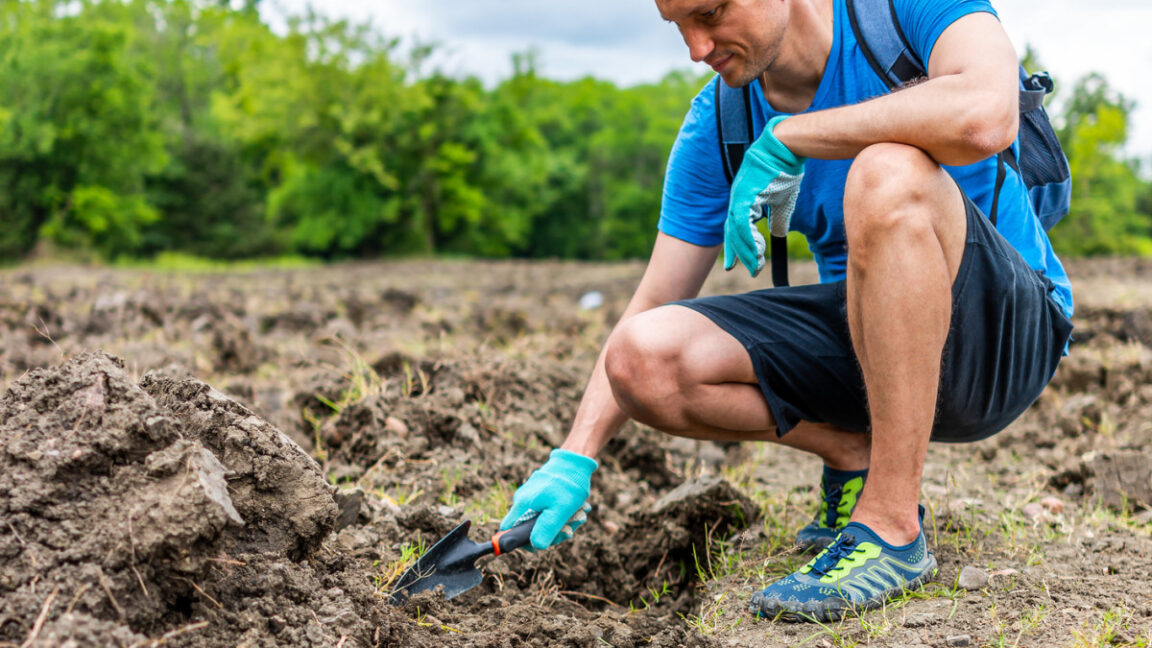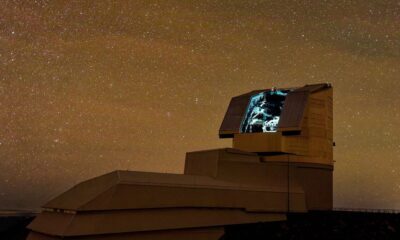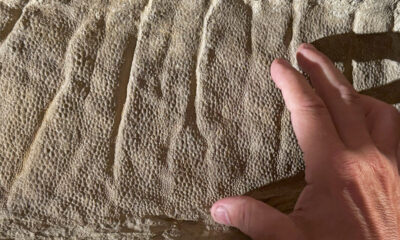Science
Discover Diamonds: Uncover Treasures at Arkansas’ Unique Mine

In the heart of southwest Arkansas lies a remarkable destination where visitors can search for and keep genuine diamonds. Crater of Diamonds State Park, located near Murfreesboro, offers a rare opportunity to dig for these precious stones at what is recognized as the only public diamond mine in the world. For the price of a movie ticket—$15 for adults and $7 for children—anyone can sift through the soil atop a volcanic formation that erupted approximately 100 million years ago.
The park, which opened in 1972, is situated above an ancient volcanic pipe that brought diamonds, formed deep within the Earth’s mantle, to the surface. This unique geological feature has attracted visitors from around the globe. Since its inception, more than 35,000 diamonds have been discovered by eager treasure hunters.
How the Diamond Search Works
At Crater of Diamonds, visitors have access to a 37-acre search field that is regularly tilled to expose new material. The park operates on a straightforward principle: anything found belongs to the finder, without any hidden fees or revenue sharing. While some may envision glamorous gems, most diamonds found at the park resemble metallic or glassy pebbles rather than the polished stones typically showcased in jewelry.
The park has no requirement for special permits and allows visitors to dig as often as they like, although motorized equipment is prohibited. A variety of tools are available for rental, and many visitors bring their own shovels, buckets, and sifting screens. Facilities include two covered pavilions with tables for wet sifting and open sluice boxes equipped with hand-operated water pumps.
Visitors can find a mix of gemstones in addition to diamonds, including amethyst, garnet, jasper, agate, and quartz. One of the most notable finds in the park’s history is the 40.23-carat Uncle Sam diamond, discovered in 1924 prior to the establishment of the park.
In recent years, the park has continued to see significant finds. In September 2021, Noreen Wredberg from California unearthed a 4.38-carat yellow diamond after just two hours of searching. More recently, a visitor named Julien Navas discovered a 7.46-carat diamond in 2024, highlighting the ongoing allure of this unique location.
A Family-Friendly Experience
Crater of Diamonds State Park not only offers a chance to find valuable stones but also creates a family-friendly atmosphere. The park sees over 180,000 visitors annually, with many families engaging in the search experience together. On average, park staff report that visitors discover one or two diamonds each day, so potential finders are encouraged to manage their expectations.
While the thrill of discovery is palpable, practical considerations must also be noted. During summer, Arkansas can reach heat indices exceeding 110°F, making the park’s small water park an appealing option for visitors seeking relief. The occasional rains also turn the search field into a muddy terrain, which can sometimes aid in spotting diamonds.
For those who may not find the elusive gem, the experience remains rewarding. Visitors often leave with a collection of interesting rocks and newfound knowledge about geology and gemstones. As one travel blogger noted, “Most visitors leave with a handful of interesting rocks, some newfound knowledge, and an urgent need for a long shower.”
Crater of Diamonds State Park continues to be a captivating destination where the thrill of discovery awaits, offering an accessible and enjoyable experience for treasure seekers of all ages.
-

 Politics4 weeks ago
Politics4 weeks agoSecwepemc First Nation Seeks Aboriginal Title Over Kamloops Area
-

 World5 months ago
World5 months agoScientists Unearth Ancient Antarctic Ice to Unlock Climate Secrets
-

 Entertainment5 months ago
Entertainment5 months agoTrump and McCormick to Announce $70 Billion Energy Investments
-

 Science5 months ago
Science5 months agoFour Astronauts Return to Earth After International Space Station Mission
-

 Lifestyle5 months ago
Lifestyle5 months agoTransLink Launches Food Truck Program to Boost Revenue in Vancouver
-

 Technology3 months ago
Technology3 months agoApple Notes Enhances Functionality with Markdown Support in macOS 26
-

 Lifestyle3 months ago
Lifestyle3 months agoManitoba’s Burger Champion Shines Again Amid Dining Innovations
-

 Top Stories2 months ago
Top Stories2 months agoUrgent Update: Fatal Crash on Highway 99 Claims Life of Pitt Meadows Man
-

 Politics4 months ago
Politics4 months agoUkrainian Tennis Star Elina Svitolina Faces Death Threats Online
-

 Sports5 months ago
Sports5 months agoSearch Underway for Missing Hunter Amid Hokkaido Bear Emergency
-

 Politics5 months ago
Politics5 months agoCarney Engages First Nations Leaders at Development Law Summit
-

 Technology5 months ago
Technology5 months agoFrosthaven Launches Early Access on July 31, 2025




















